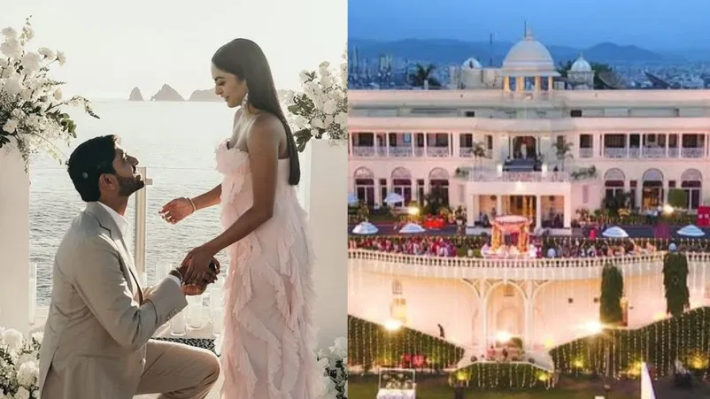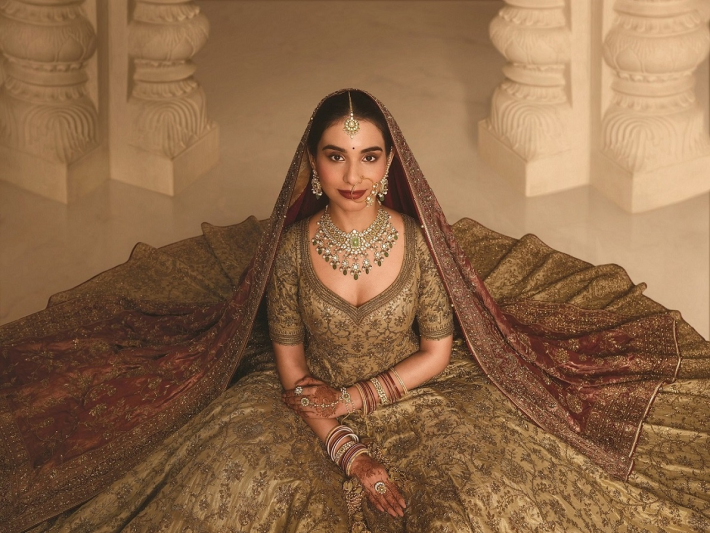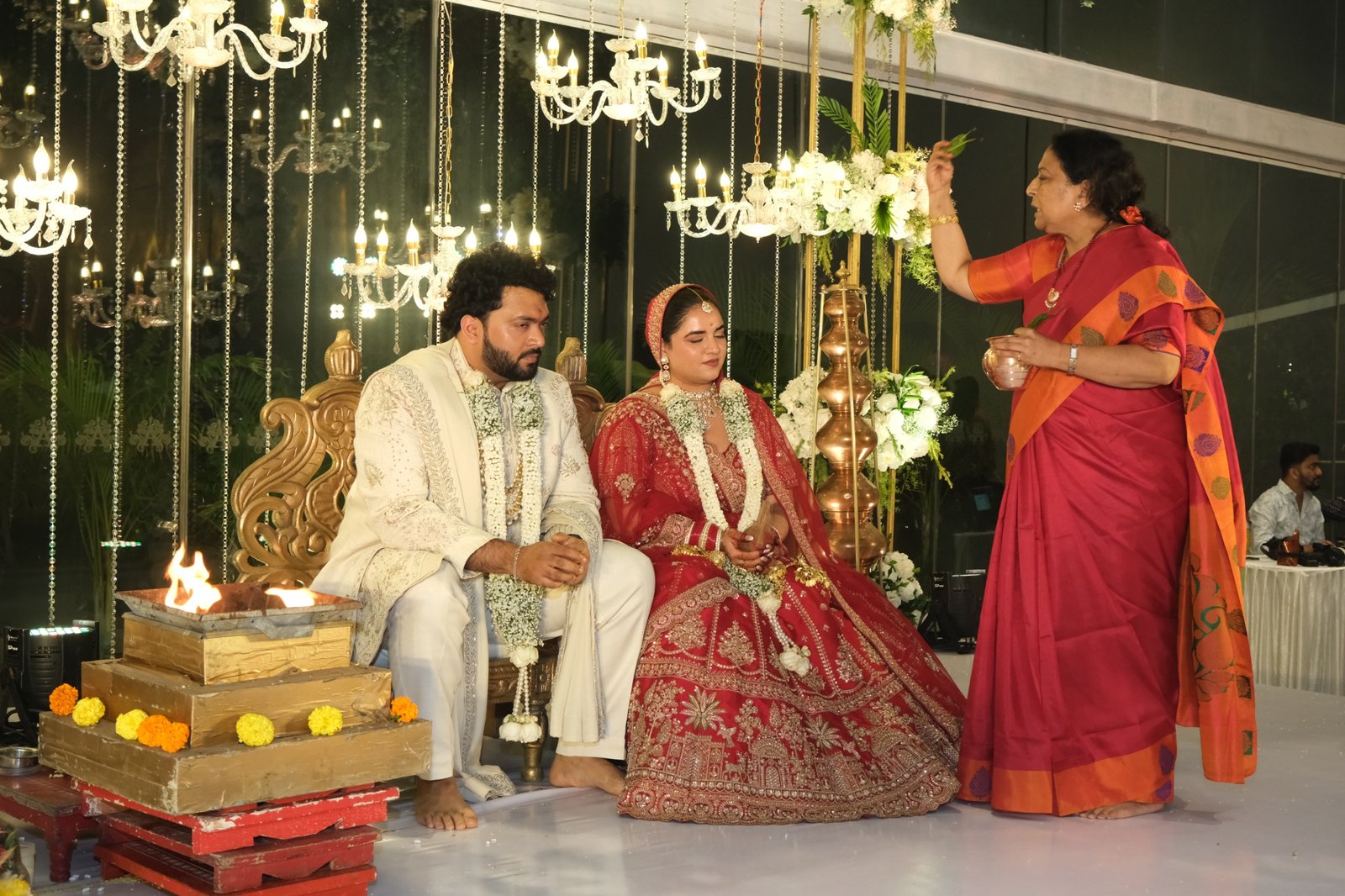Mentoring Magic exhibition at 47-A
Step into a world where tradition finds its contemporary voice. From 25th to 29th June 2025, 47-A, the celebrated design gallery in the heart of Khotachi Wadi, presents Mentoring Magic, a beautifully curated exhibition by Srila Chatterjee. At the core of this powerful showcase is designer Aditi Prakash’s visionary mentorship that has empowered nine traditional artisans to evolve into modern artists, while staying deeply rooted in their heritage.
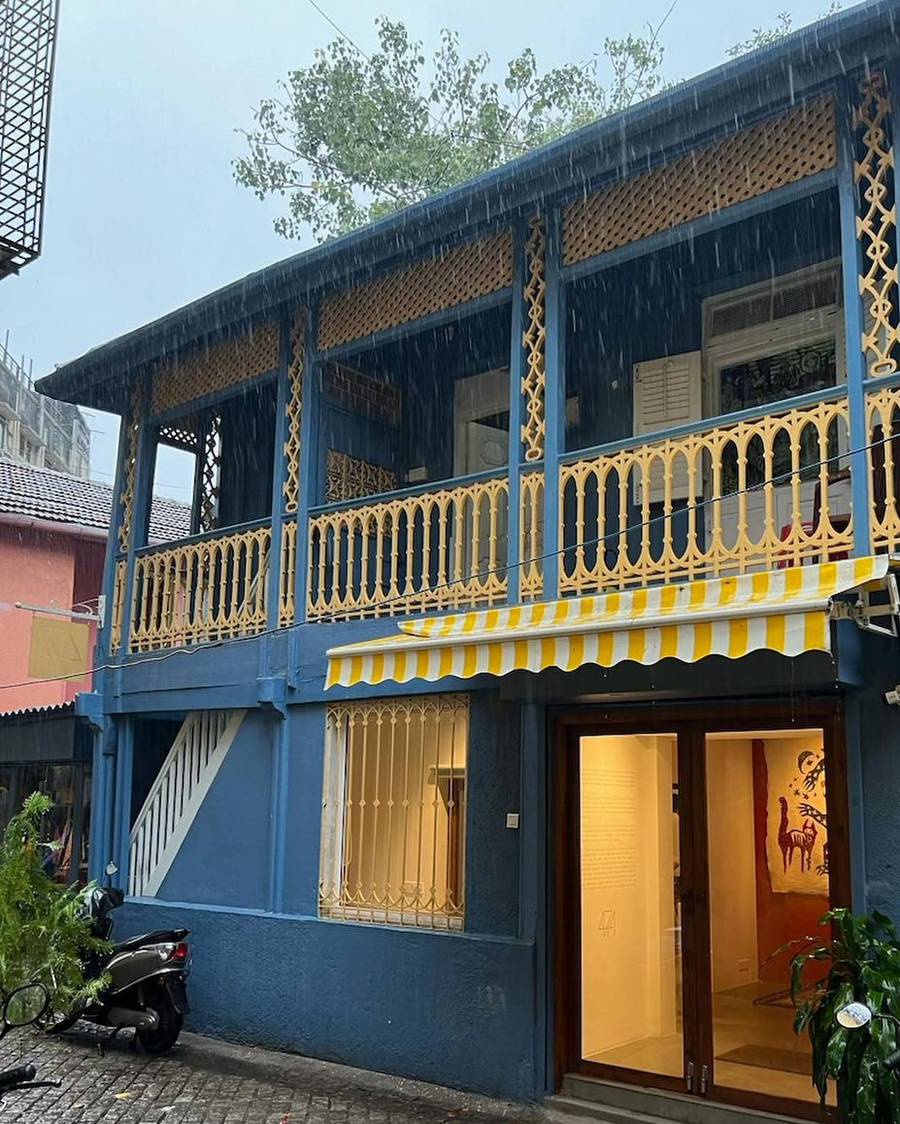
Through immersive workshops focused on storytelling, upskilling, and material exploration, artists working in Gond, Bhil, and Madhubani art forms have developed bold, contemporary narratives. The result is a striking display of transformation: from Sandeep Dhurve’s textured explorations of nature to Preeti Das’s reinterpretation of Sanchi through Madhubani, and Hemraj Bhabhor’s intricately stylized Bhil motifs, each piece speaks of growth, identity, and innovation.
Held at 47-A, a gallery that blurs the lines between craft, art, and design, Mentoring Magic is a celebration of empowerment, community, and the future of Indian folk traditions. Don’t miss this evocative journey into the evolving soul of indigenous art. TheGlitz caught up with 47-A’s Srila Chatterjee, Aditi Prakash and the three incredibly talented artists.
Srila Chatterjee, Owner and founder of Gallery 47 A and Baro Market
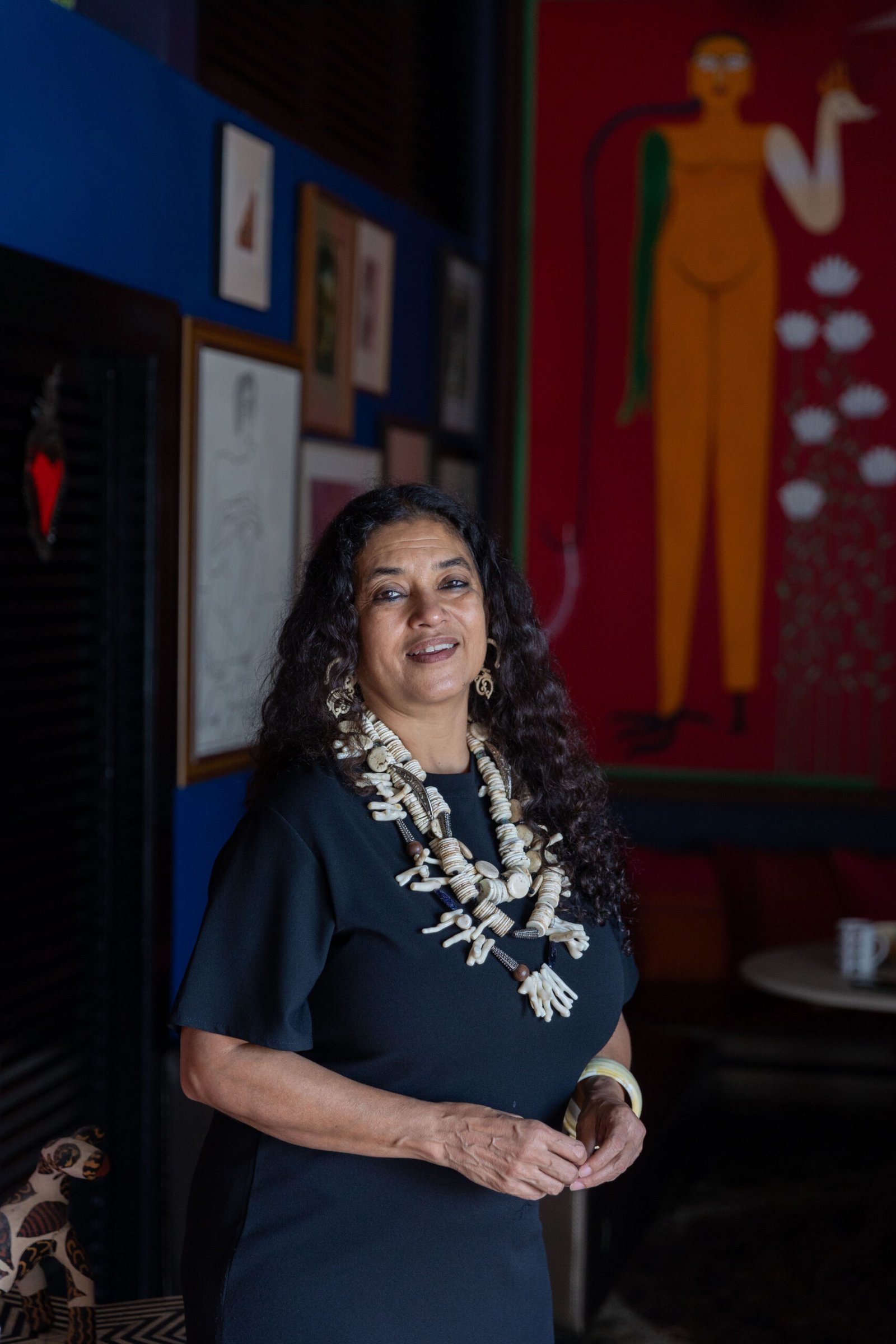
What was your vision behind curating Mentoring Magic at 47-A, and how did you select the artists and works that best represented this idea?
We have not curated this show. Mentoring Magic is our showcase of what Creative Dignity worked on for a year as part of Project Tarasha. We are presenting it because it is everything we believe in and work towards.
You’re known for celebrating the intersection of craft, design, and community. How does this show align with your larger curatorial philosophy?
The artists come from ancient craft forms; they were mentored by people all trained in design; the process was one that changed them from being artisans to artists, with original voices and thoughts. Our philosophy is based on the fact that finding ways for artisans to make this transition and to create exciting, attractive work is the only way that we can make real change in their lives that will help bridge the terrible gaps in equity in the community at large.
How do you hope urban audiences engage with these reimagined tribal art forms and what do you think will surprise them most?
The work is beautiful, familiar and had deep stories behind it. I cannot see them not being attractive to anyone. The layers and depth of the art will probably be a surprise.
What curatorial challenges or revelations emerged during the process of bringing traditional forms into a contemporary design context?
This is not a new process for us – we have been working similarly for years. The challenge is always the same: ensuring the work is “finished’ well – in this case, it means framing it well – and presenting it beautifully, like any work in a contemporary gallery.
What role do venues like 47-A play in changing how we value and interact with traditional art in today’s design ecosystem?
We play a big role because people trust what we do as being authentic. They visit us not always knowing what they will find but happy to discover – and so in this way, they learn about art like this. When we present something as being special, our visitors begin to see that. They hear our stories and those get assimilated into their own lives and they then spread.
Aditi Prakash – Designer & Mentor
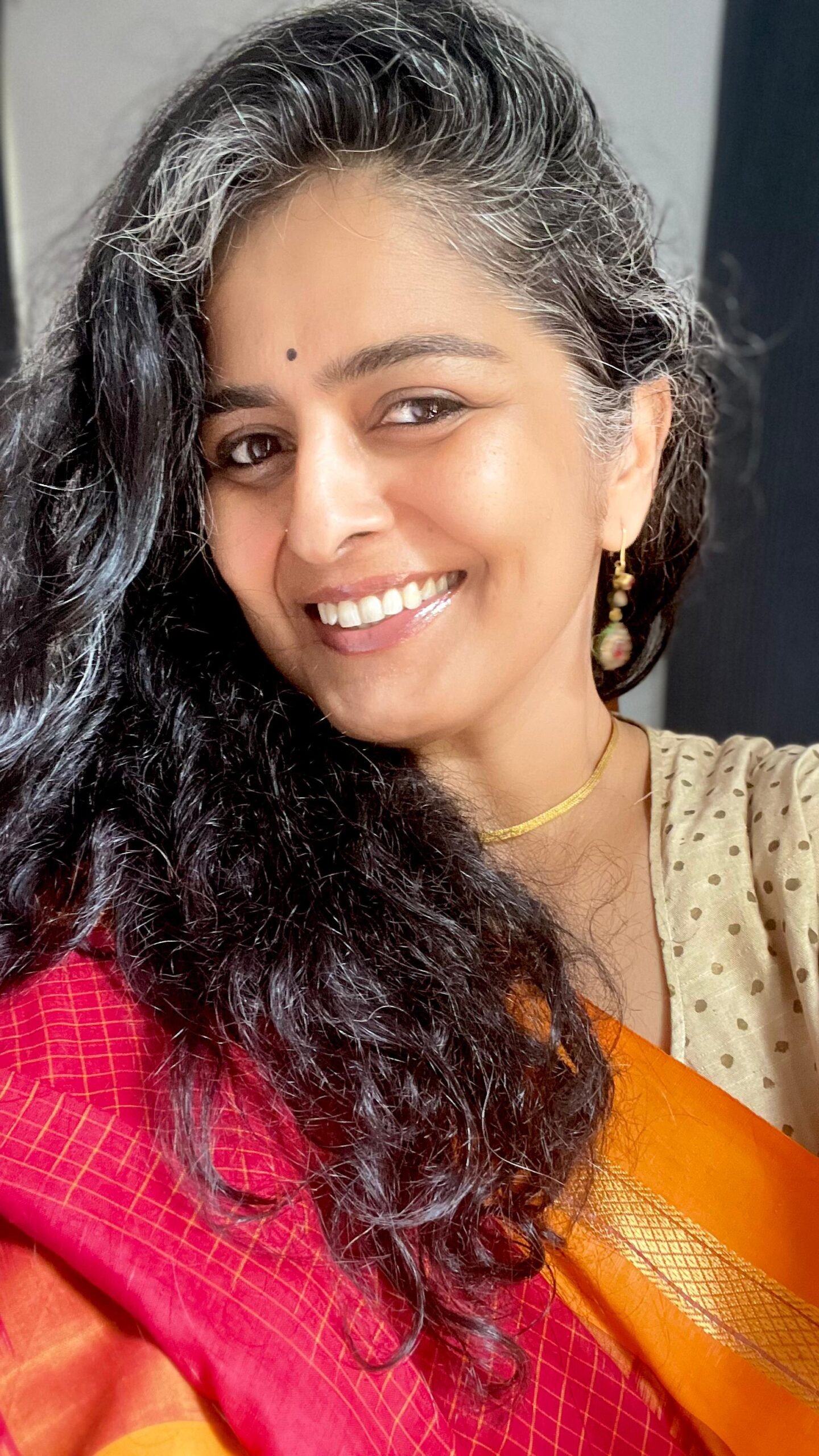
You’ve worked at the intersection of design and social change for years. What inspired the mentorship framework of Project Tarasha, and how did you shape it to empower artisans as contemporary artists?
In most skill development or craft-based workshops, the focus tends to be on product development—with clear outcomes aimed at market-readiness. While that approach has its place, I knew from the beginning that the intention behind Project Tarasha had to be different. I wanted to create a space where the artisans could grow not just as skilled hands, but as thinking, reflective artists. This meant taking a slightly riskier, more open-ended approach.
The framework of this mentorship was inspired more by the pedagogy of an art school than a craft training program. We moved away from generalised instruction and instead worked closely with each artisan to identify their strengths, challenges, and individual artistic voice. While we worked around shared themes, the process for each participant was adapted to suit their unique rhythm and aptitude.
Rather than treating their art as a means to generate quick products, we focused on deepening their storytelling, both visually and narratively. At the same time, we offered technical modules—on materials, composition, background work—that helped them expand their expressive toolkit. In doing so, the idea was to honour the traditional visual language they come from, while also allowing them to evolve within it and respond to the world around them as contemporary artists.
I believe true empowerment lies in enabling someone to see themselves differently—and this mentorship was designed to do just that.
How do you approach preserving tradition while encouraging artistic evolution, especially in heritage-based art forms like Gond, Bhil, and Madhubani?
When we talk about preserving tradition, it’s important to also be precise about what we mean by “tradition.” In the case of Gond painting, for instance, the form as we know it today is only about fifty years old. It was initiated by Jangarh Singh Shyam in the 1980s, and most contemporary Gond painters—including many of the artists in our program—belong to that same extended lineage.
Prior to this shift, wall painting was largely practiced by women during household rituals like lipai, and it functioned more as domestic decoration than as a formal visual language.
So in that sense, Gond painting doesn’t carry the kind of rigid historical grammar that you might see in older traditions like Pattachitra or Madhubani. There is more room to expand, question, and reinterpret. That’s a space I find rich with possibility.
My approach has not been to “preserve” tradition as a fixed set of rules, but to protect its core vocabulary—the motifs, the visual rhythm, the sense of relationship to land and memory—while giving the artists permission to evolve and individualize their expression. This means encouraging them to reflect on their own lives and contexts, to observe more closely, and to bring their own stories into the work. Some of the most meaningful shifts I’ve seen happen when the artist begins to treat their tradition not as a boundary, but as a springboard.
In my view, heritage art forms are living languages. They don’t survive by staying unchanged; they survive by continuing to mean something to the people who practice them.
What was the most transformative moment you witnessed during these artisans’ journeys from skilled craftspeople to self-expressive artists?
It’s difficult to pinpoint a single transformative moment, because this kind of shift—from skilled execution to self-expression—is gradual, often invisible, and deeply personal. It’s a process that takes much longer than the duration of any one project, but what I have witnessed is the slow, steady growth in confidence among the artisans.
They are beginning to take greater ownership of their work—not just in how they create it, but in how they speak about it, present it, and relate to their audience. That shift in posture, from executing a form to standing behind a story, is perhaps the most meaningful sign of transformation.
One of the artists from the earlier batch has particularly stood out in this regard. It’s been heartening to see how he has taken the inputs from the mentorship and used them as a springboard—embracing new opportunities, showing initiative, and continuing to evolve in his own direction.
For the current batch, this is still very much the beginning. But experiences like this mentorship, and the opportunity to exhibit their work in a space like Baro Art, are significant. They build the kind of self-confidence that is essential for any artist to find their voice—not just once, but again and again over the course of a lifetime.
What role does storytelling play in your mentorship model, and how have these artists embraced narrative in their work?
Storytelling lies at the core of this mentorship model. When the team at Tarasha first approached me, one of the key challenges they had identified was that many artists were struggling to sell their work—not because of a lack of skill, but because there was very little to distinguish one artist from another. The visual language was becoming repetitive, with many artists copying popular themes or motifs, which diluted the individuality of their practice.
Rather than introducing a product-based intervention, I felt it was more meaningful—and sustainable—to equip them with tools of storytelling. Of course, I was aware that this would be a slower and more demanding process than a typical skill development module, but I was also confident that it would lead to a deeper kind of transformation. And it has.
In the beginning, there was some hesitation. The exercises were open-ended and unfamiliar. But over time, the artists began to see how much more powerful their work became when they could anchor it in lived experience, memory, or personal observation.
We drew heavily from approaches more commonly found in art schools rather than design or craft workshops. For instance, I adapted several exercises from the work of cartoonist and educator Lynda Barry, who offers deceptively simple yet profound ways to access memory and imagination.
One of her techniques involves asking detailed sensory questions—What was the temperature? What time of day was it? What was in front of you, behind you, above you? These prompts helped the artists move beyond surface imagery and into the emotional atmosphere of a scene.
Through this process, many of them began to paint not just what they knew, but what they felt. The result has been a visible shift—not only in the content of their work, but in their sense of authorship. I believe this approach has the potential to be adapted for many traditional visual art practices across the country, wherever the need arises to help artists move from imitation to expression.
How has your own design philosophy evolved through working with these incredible talents from rural and tribal communities?
What stood out to me from the very beginning of this project was the opportunity to engage at a much deeper level than most typical design interventions allow. Unlike short-term product development workshops—which often run for two weeks or, at best, a few months—this was a year-long engagement.
That extended timeline gave us the space to really listen, adapt, and design modules in response to what was emerging on the ground. It allowed for experimentation, reflection, and meaningful growth—for both the artisans and myself.
In many ways, this project brought together different strands of my own experience—as a designer, entrepreneur, and practicing artist. It felt like a kind of full circle. I wasn’t limited to applying a fixed design methodology, but could instead draw from multiple ways of thinking and making, depending on what the moment called for.
More than anything, it reaffirmed a belief I’ve held for a long time: that real impact doesn’t come from projects that simply look good in publications or perform well on social media. It comes from slow, often invisible processes that invest in people, relationships, and context.
This experience has strengthened my resolve to focus on work that is rooted in long-term transformation rather than surface-level innovation. It reminded me that design, at its best, is not just about creating products—it’s about building capacities, shifting perspectives, and enabling new ways of seeing.
This showcase is set in the beautifully historic Khotachiwadi. How do you feel the venue itself adds to the experience and message of Mentoring Magic?
The show is a unique convergence of craft, design, and cultural heritage within Mumbai’s heritage village, reinforcing 47‑A’s larger mission to blur the lines between art, craft and design.
Sandeep Dhurve – Gond Artist
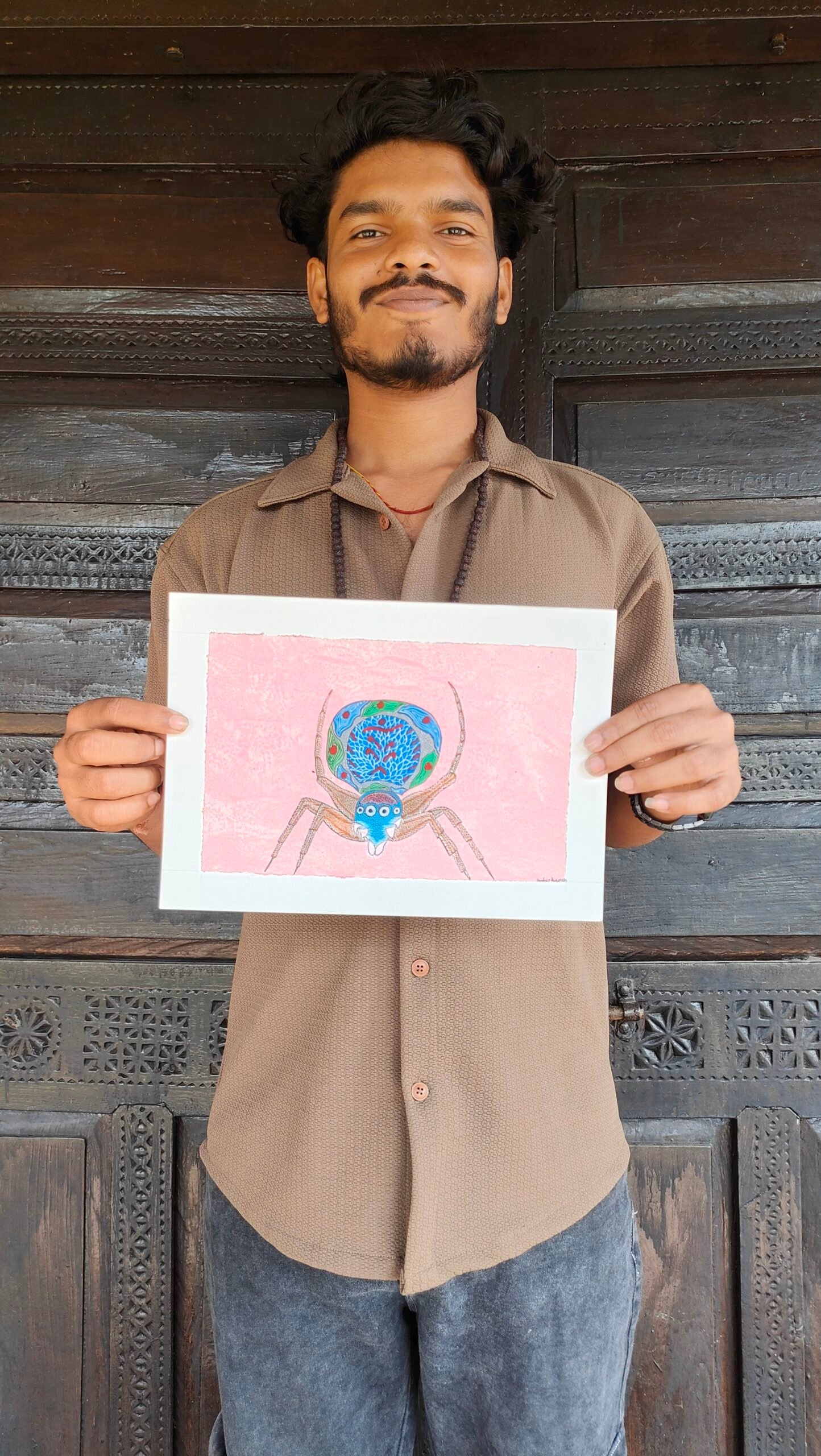
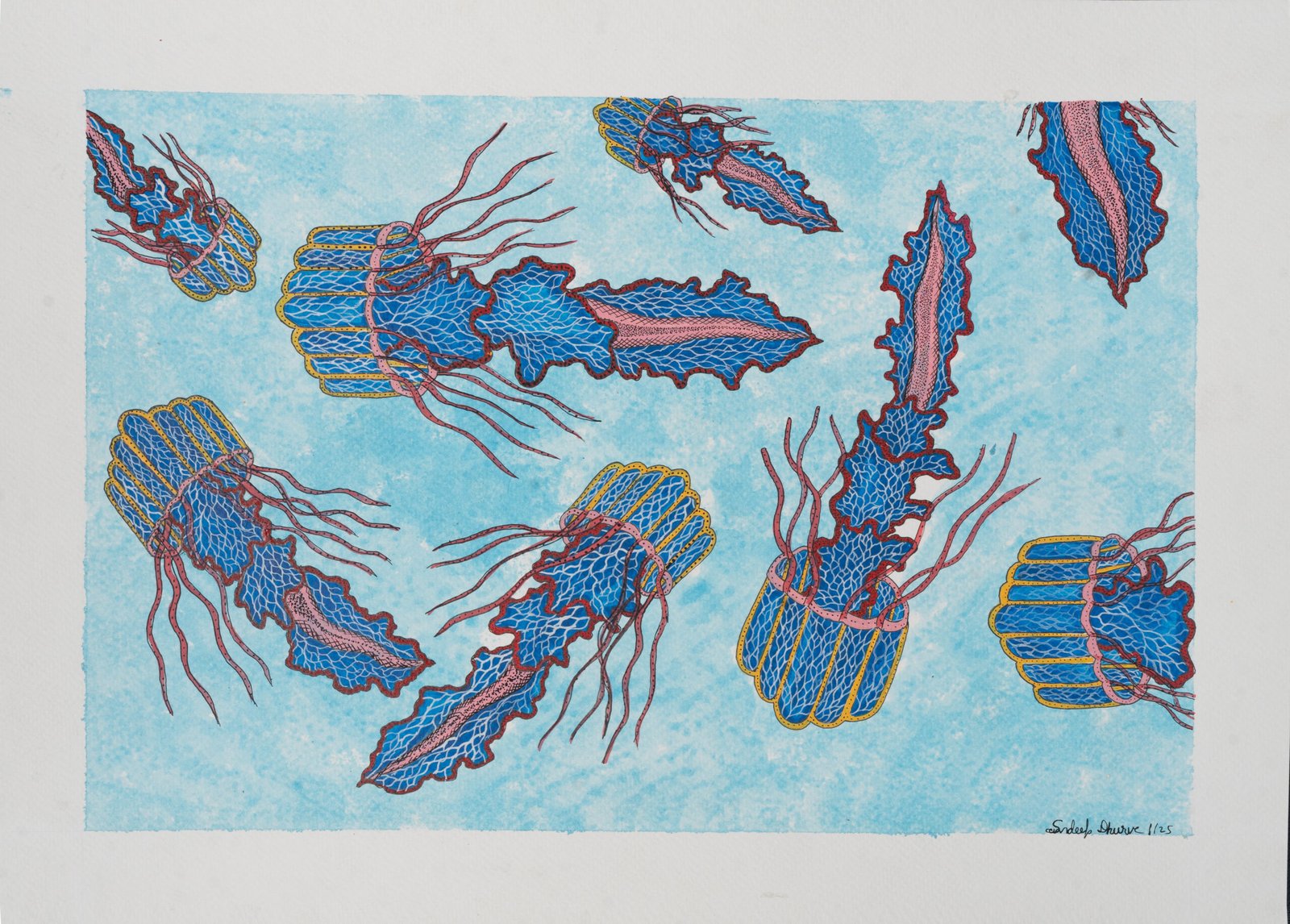
Your paintings reflect a deep connection with wildlife and nature. How did your inclination toward these subjects begin?
Since childhood, I’ve had a strong interest in animals, plants, and wildlife. I started watching programs like Discovery Channel at a very young age. So thinking about and imagining these things came naturally to me. That’s why nature has always been a core inspiration in both my thought process and my art.
During Project Tarasha, how did working with new mediums change your creative process?
Earlier, I used to focus only on storytelling—my main goal was to depict the story through the painting. But during the Project Tarasha workshops, under Aditi Ma’am’s guidance, I learned that creating a painting isn’t just about telling a story. If you want your audience to truly feel your artwork, you need to pay attention to elements like color selection, background, and contrast. That changed my perspective, and I began applying these aspects to my work.
You work with a limited color palette. What does that choice mean to you, both creatively and culturally?
I avoid using too many bright colors because traditional Gond art used natural pigments. Not every color was available at the time. Keeping that in mind, I try to create compositions using fewer colors while still maintaining depth and beauty in the artwork. During the Project Tarasha workshops, I also learned that powerful work can be created even with a limited color range.
How has mentorship changed your perspective? Have you started seeing yourself more as an artist than just a craftsperson?
Yes, after participating in the workshop, there was a big shift in my thinking. Earlier, I focused solely on translating a story into a painting. Now, I also think about how to make viewers feel the emotions I experience. I used to always strive to create something entirely new, but I’ve realized that in doing so, we can lose the essence of tradition. So now, I try to blend traditional techniques with new ideas—preserving identity while allowing space for innovation.
What message do you wish to convey to urban audiences through your art?
My paintings often depict wildlife and animals because I want urban audiences to think beyond themselves—to think about these beings as well. Nature has created everything equally. The intelligence we’ve been given shouldn’t be used just for our own gain, but to ensure that other creatures also have the right and space to live.
Do you see yourself mentoring other artists in your community someday?
Not right now, but I definitely hope to do so in the future.
Preeti Das – Madhubani Artist
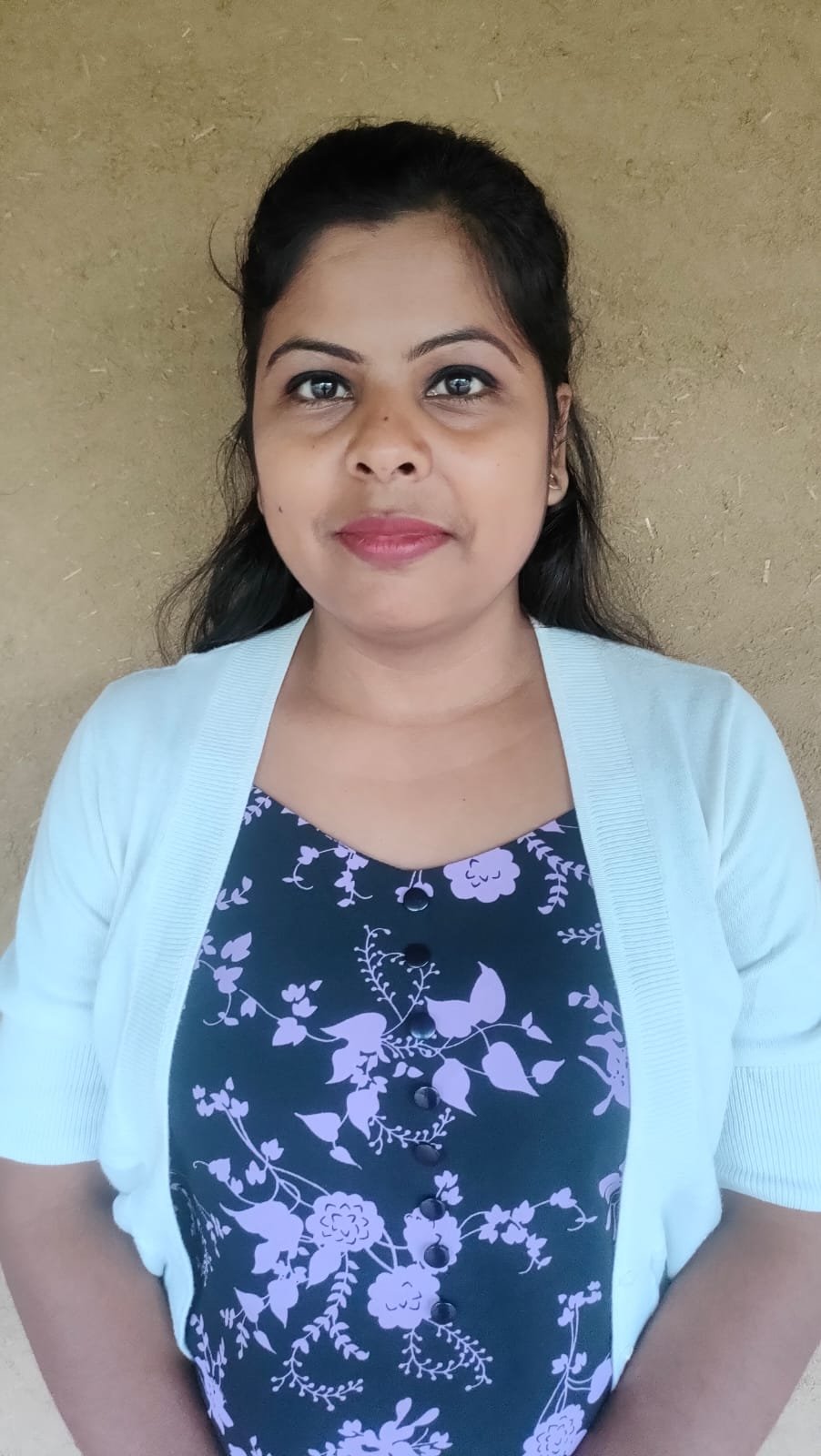
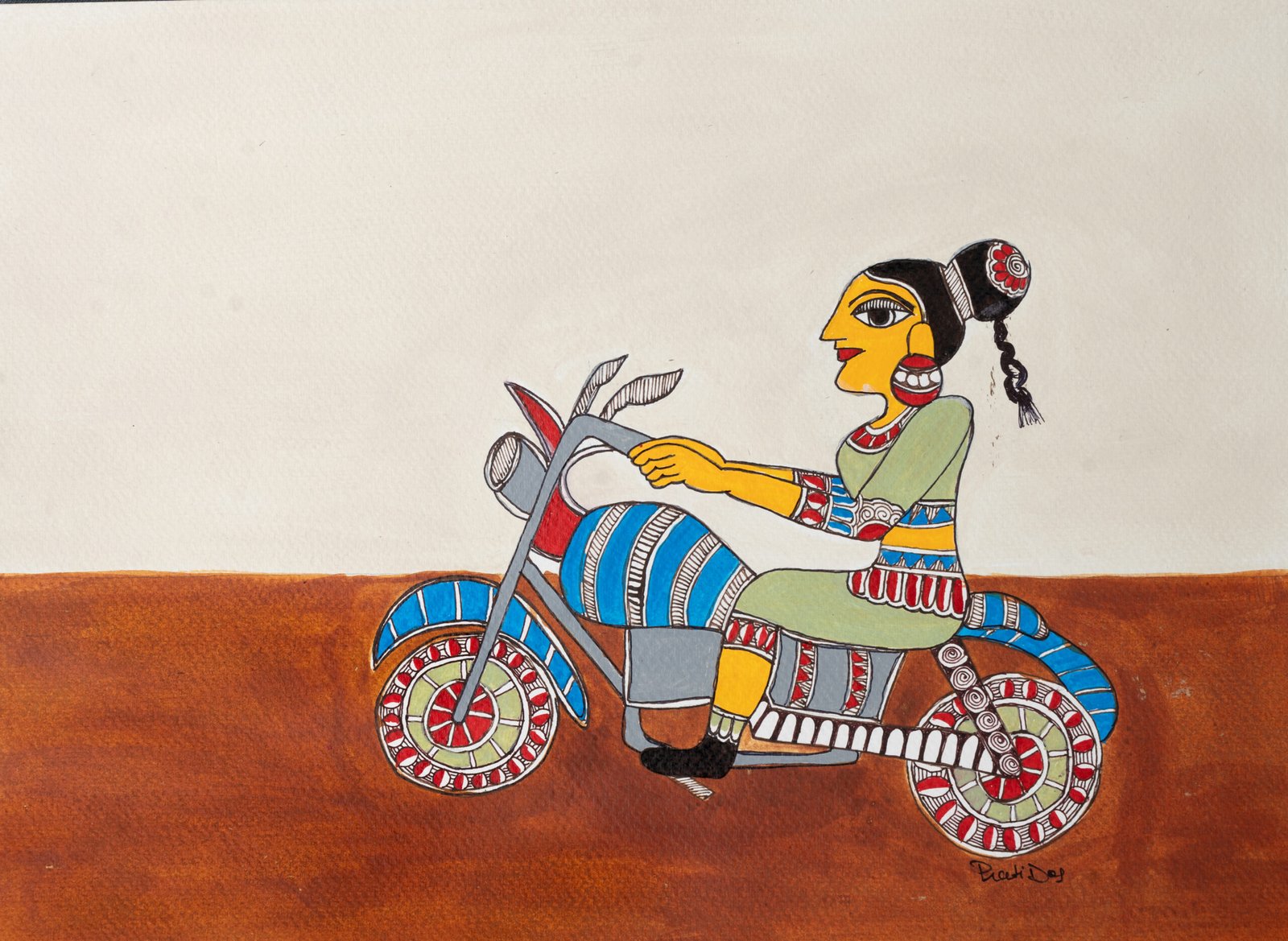
Your reinterpretation of Madhubani through the lens of Sanchi is striking. How did that inspiration come about?
I felt a profound sense of depth and tranquility in Sanchi’s artistic language. As I explored its stories and architecture, it occurred to me that if these symbols were expressed through the Madhubani style, they could create a new visual language of dialogue. This inspiration arose from an inner curiosity… a desire to view tradition through a modern perspective.
How has your understanding of form, space, and composition changed through Project Tarasha’s mentorship?
Project Tarasha’s mentorship taught me that a composition is not just made of colors and lines, but is shaped by thought, the balance of space, and the depth of the story it tells. For the first time, I understood that even empty space can engage in dialogue. Now, in every painting of mine, space has become just as essential as color.
Was it difficult to step outside the traditional framework of Madhubani? How did you overcome that hesitation?
Yes, in the beginning, there was a lot of fear—as if I was doing something ‘wrong.’ But then I realized that tradition isn’t a wall; it’s a root. I drew branches from it, allowed it to grow, and gradually, confidence followed. The soul of Madhubani still lives in my art.
Which new technique or idea in your current work are you most proud of?
I’ve started presenting figures and symbols in a very subtle and stylized manner. Using layered storytelling and abstract backgrounds was new for me, and when people began to see depth in it, I felt proud that I was able to express something truly original.
How has your community responded to your new style and contemporary identity?
Initially, the reactions were mixed—some were surprised, some confused. But as my art started gaining recognition, people began to embrace it. Now, people from my village and community proudly say, “This is the art of our daughter, being showcased across the country and abroad.” That, for me, is the greatest victory.
Now that you have found this creative freedom, what would be your dream project?
I want to create a series based on India’s historic sites—reimagining each location through the Madhubani style. Just as I did with Sanchi, I’d love to explore places like Ajanta, Hampi, or a Mughal garden. I also wish for these paintings to be displayed in public spaces, where people can see them every day and connect with them.
Hemraj Bhabhor – Bhil Artist
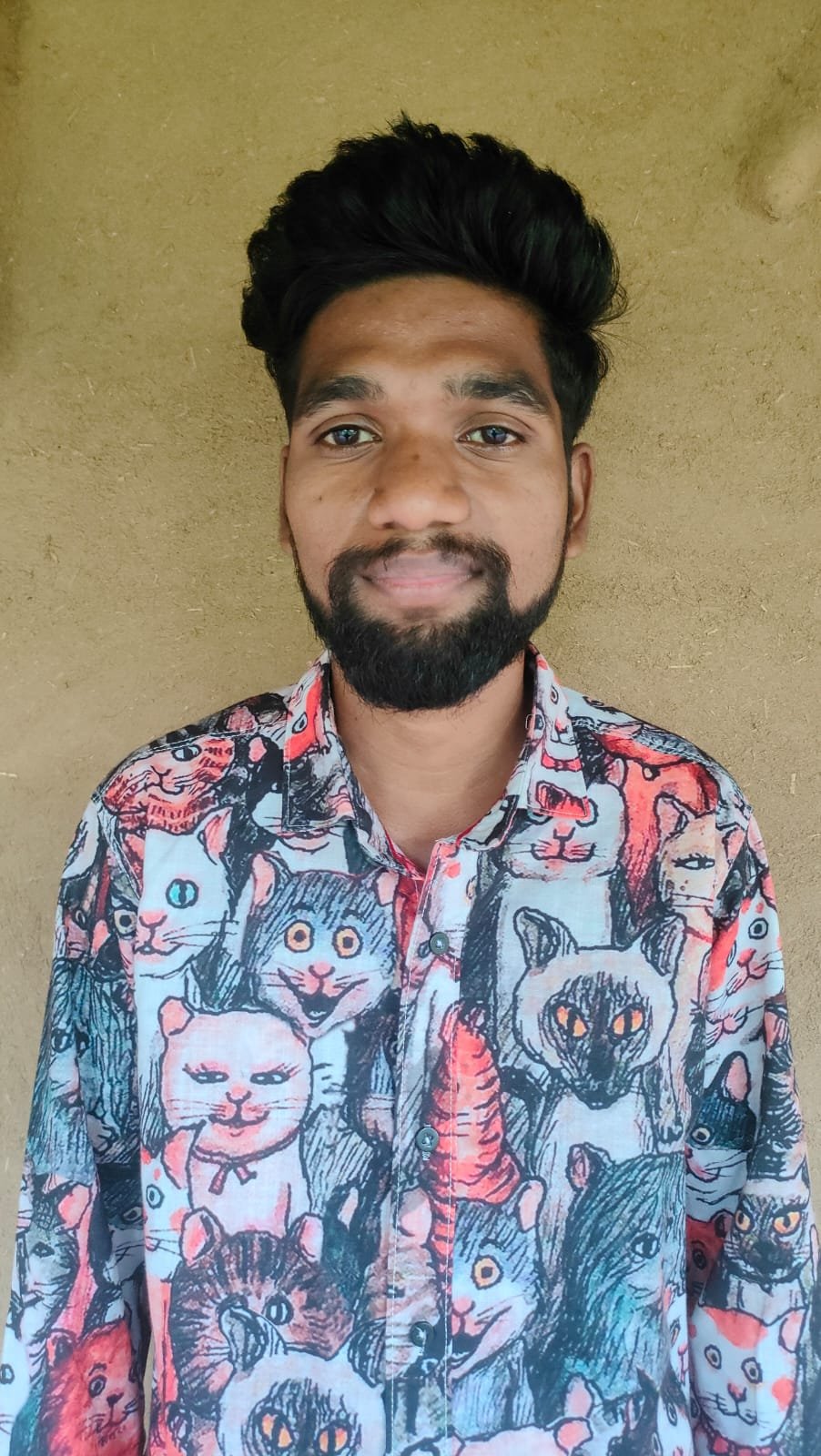
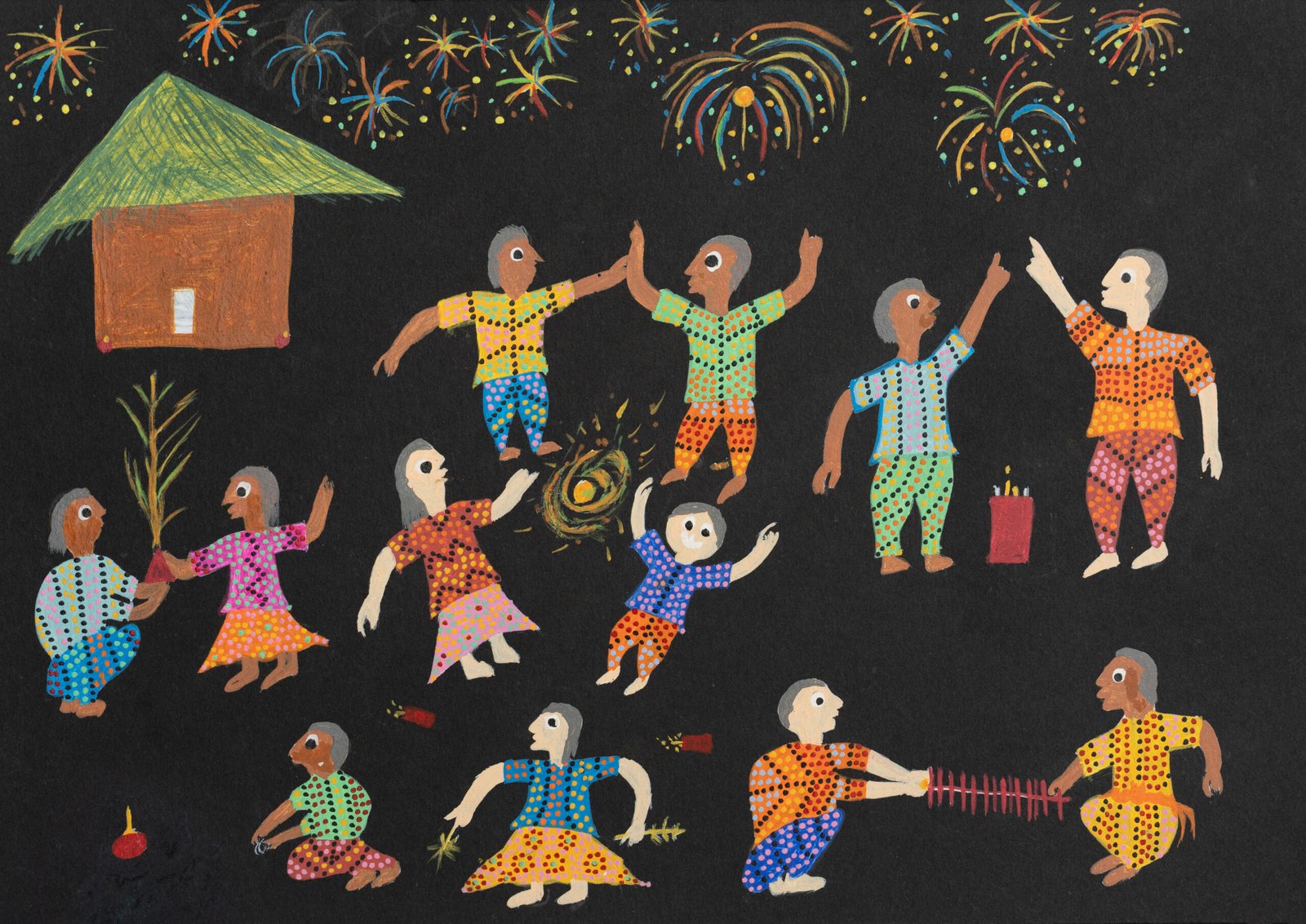
Your work showcases incredible intricacies of animals and insects. As a Bhil artist, why are these subjects important to you?
For me, animals, birds, and insects are not just subjects—they are companions of our lives, our stories, and nature itself. Since childhood, I have seen, heard, and understood them in my village. In the Bhil tradition, every creature in nature holds meaning and plays a role. My art is deeply rooted in those experiences and relationships.
Project Tarasha encouraged experimentation. Which new techniques or mediums excited you the most?
During Tarasha, I learned a lot about backgrounds, textures, and the combination of colors. Earlier, I only focused on painting, but here I understood how to create an atmosphere within a piece—how the background is not just empty space, but an integral part of the narrative. Working with textures gave me new ways to express depth. All of these experiences were exciting and filled with learning.
How has your artistic expression evolved through this mentorship? Are you telling different stories now?
Yes, earlier I used to observe others’ work and stories, but now I reflect and create my own. I’ve started thinking about my own identity and the changes I want to express. My art now carries not just memory, but dialogue—a conversation between the old and the new. I no longer paint only what I see—I now paint what I feel.
What challenges did you face in presenting Bhil art in a contemporary space, and how did you overcome them?
The biggest challenge was recognition—would people see this as ‘art’ or merely ‘craft’? Many times, traditional art is viewed only as handicraft, without acknowledging the artist’s voice behind it. I shaped my work in a way that honored the Bhil tradition while also highlighting personal thought. The mentors at Tarasha helped me realize how vital my own voice is in my art. Their guidance gave me the confidence to claim my identity in contemporary spaces.
What did it mean to you personally when you were presented not just as a craftsperson, but as an artist in a design gallery like 47-A?
It was a deeply emotional experience for me. For the first time, I felt heard—not just as a practitioner of a traditional style, but as a thinking, contemporary artist. Having my work showcased at a platform like Gallery 47-A was an honor for both me and my community. It proved that Bhil art isn’t just tradition—it can speak powerfully in today’s time as well.
Where do you see your art going next—would you like to explore installations, collaborative projects, or digital mediums?
I want my art to stay rooted in the earth, yet reach farther. Installations offer the chance to make stories felt within a physical space, while digital mediums allow me to connect with the younger generation. I also want to collaborate with others—where my tradition and someone else’s imagination can come together to create something entirely new.






